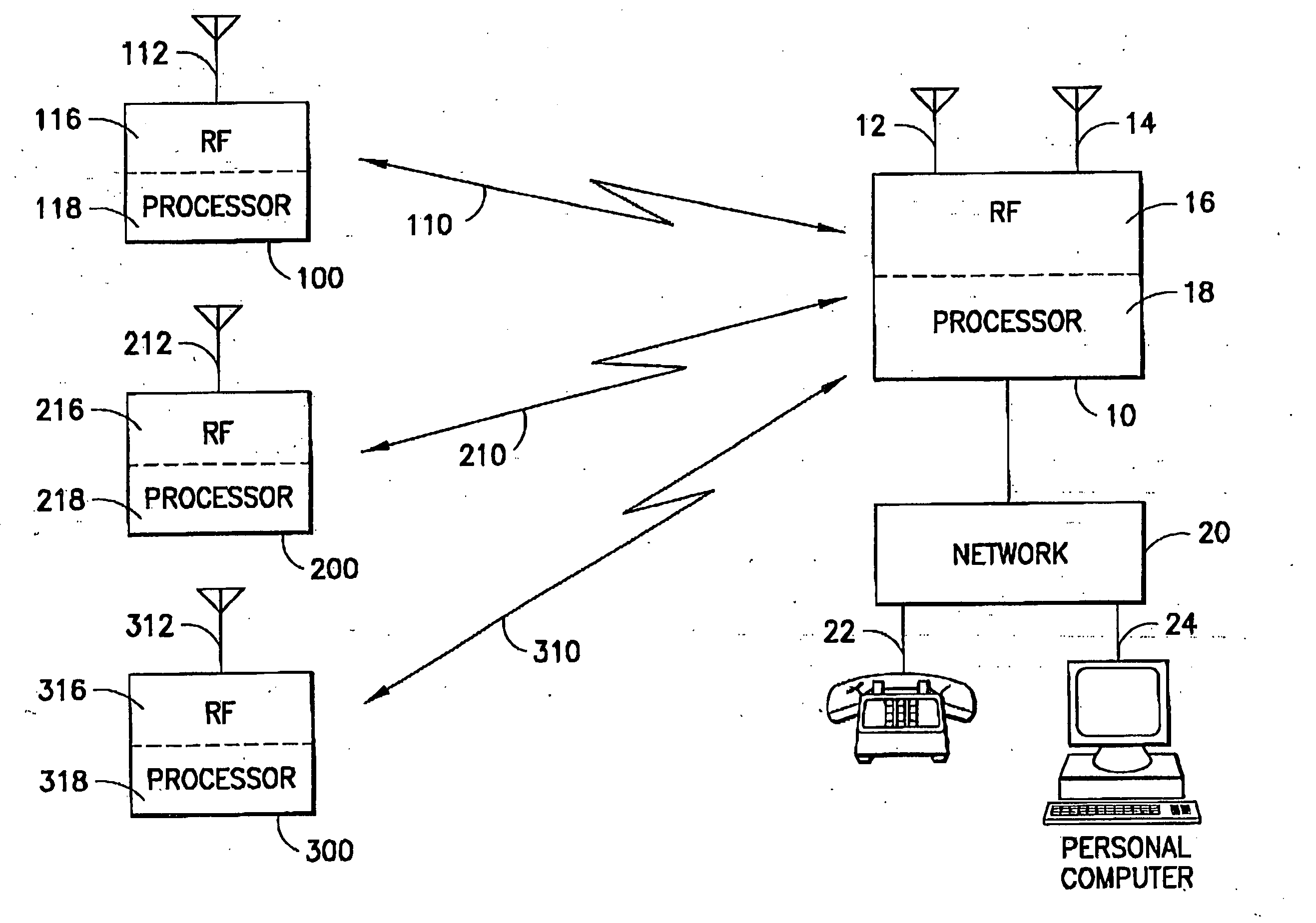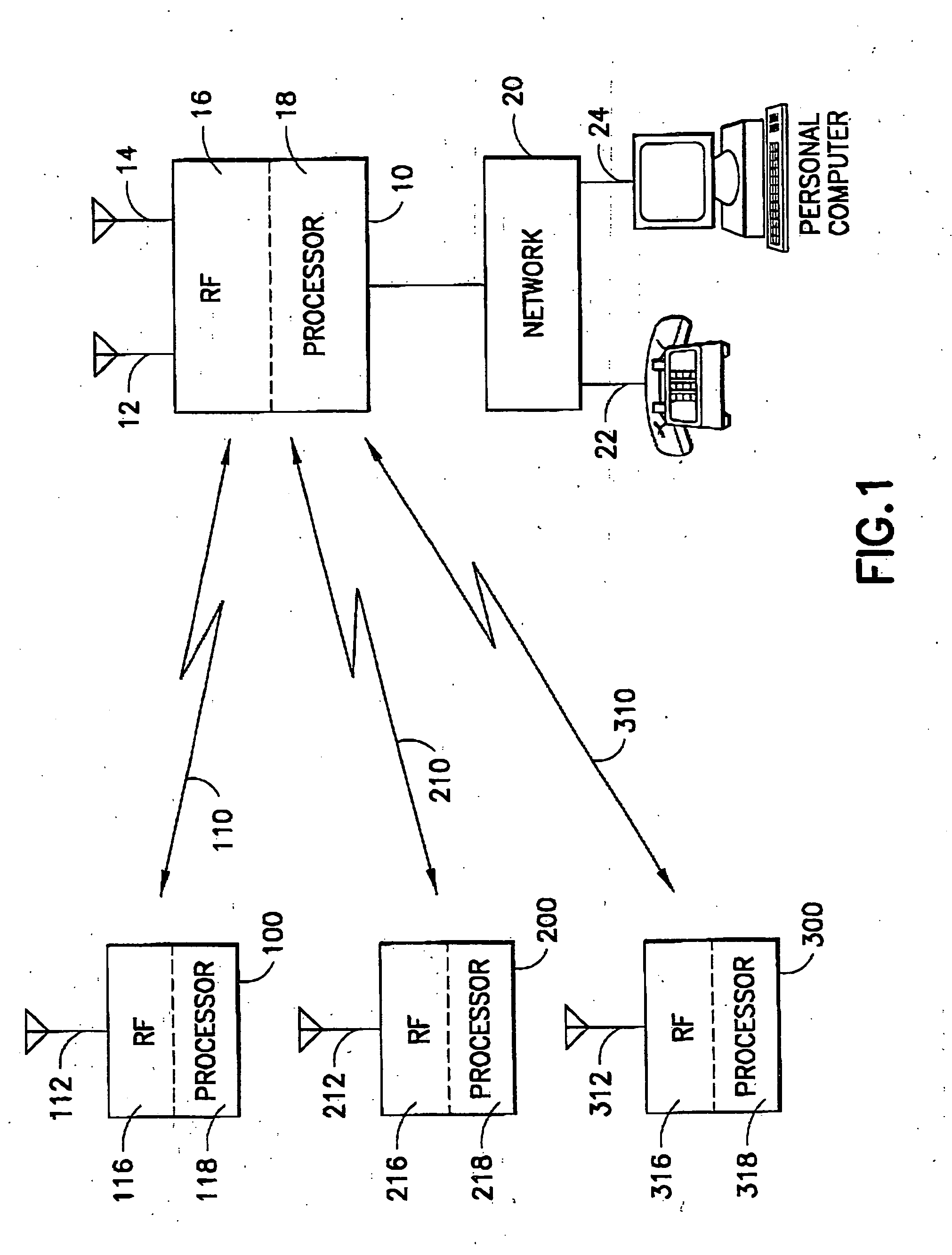I/Q MIMO detection for single antenna interference cancellation
a single antenna and interference cancellation technology, applied in diversity/multi-antenna systems, phase-modulated carrier systems, digital transmission, etc., can solve the problems of significant addition to receiver costs, general system capacity limitation, and literature that has not dealt with ic techniques involving both real and complex modulation alphabets, so as to improve edge peak data rate and peak data rate for gprs
- Summary
- Abstract
- Description
- Claims
- Application Information
AI Technical Summary
Benefits of technology
Problems solved by technology
Method used
Image
Examples
Embodiment Construction
[0017]FIG. 1 illustrates a simplified block diagram of a portion of a telecommunications system in which base station 10 communicates with three or more mobile stations 100, 200 and 300. Station 10 is connected to a network 20, which may be a switched telephone (voice or data) network having as input voice handsets 22 and / or data terminals 24.
[0018] Mobile stations 100-300 have single or multiple antennas 112, 212 and 312, respectively and communicate with the base station over channels 110, 210 and 310. Illustratively, base station 10 has two or more antennas 12 and 14. Base station 10 is capable of transmitting GMSK and / or 8PSK signals. Within base station 10, RF unit 16 handles the RF (and IF) signals, while processor unit 18 handles manipulation of the baseband signals. Counterpart units 116, 216 and 316 for RF and 118, 218 and 318 for baseband are located within the mobile stations 100-300.
[0019] The invention exploits the special properties of GMSK / BPSK signaling for improve...
PUM
 Login to View More
Login to View More Abstract
Description
Claims
Application Information
 Login to View More
Login to View More - R&D
- Intellectual Property
- Life Sciences
- Materials
- Tech Scout
- Unparalleled Data Quality
- Higher Quality Content
- 60% Fewer Hallucinations
Browse by: Latest US Patents, China's latest patents, Technical Efficacy Thesaurus, Application Domain, Technology Topic, Popular Technical Reports.
© 2025 PatSnap. All rights reserved.Legal|Privacy policy|Modern Slavery Act Transparency Statement|Sitemap|About US| Contact US: help@patsnap.com



